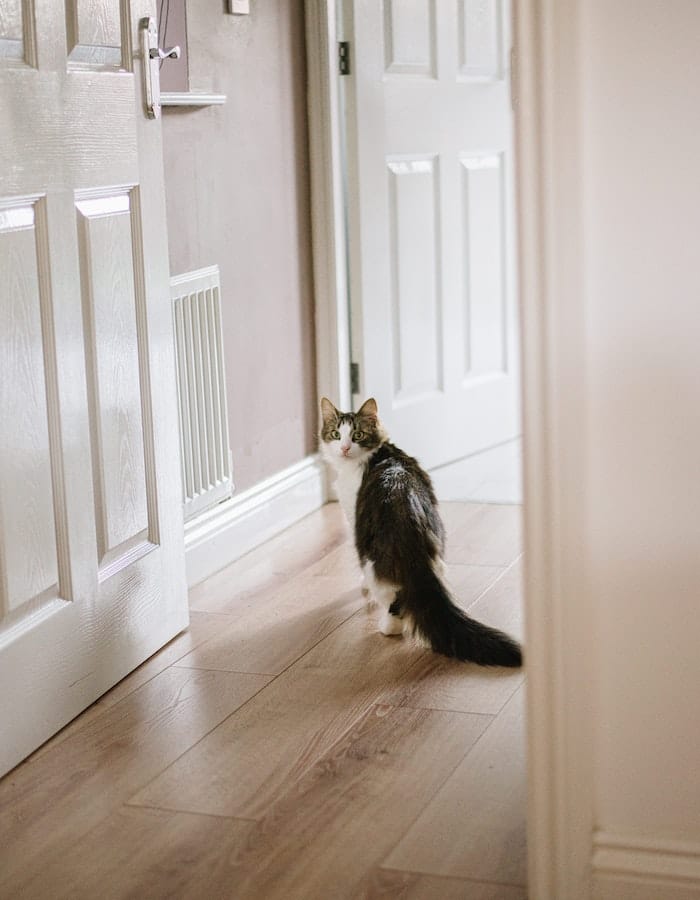
Do you ever watch your cat and wonder what he or she is trying to say?
Many people don’t realize that cats have their own form of communication, which is often conveyed through their tails.
In this blog post, we will discuss the meaning behind cat tail language. We will also provide examples of different types of wags and explain what each one means.
So, next time you are around your kitty, be sure to watch her tail and see what she is trying to tell you!
Why do cats wag their tails while lying down?

One common reason why cats wag their tails is that they are content and happy.
If your cat is lying down and wagging her tail, it’s a good sign that she is feeling relaxed and comfortable in her surroundings.
This type of wag is often accompanied by a purr, which further indicates that your cat is happy and content.
Another reason why cats wag their tails is that they are trying to communicate with you.
Cats use their tails as a way to express their emotions, and they will often wag their tails when they are feeling playful, friendly, or even anxious.
If you see your cat wagging her tail while she is looking at you, it’s a good sign that she wants to interact with you and is trying to communicate her feelings.
Cats also wag their tails when they are feeling threatened or scared.
If your cat’s tail is low and she is wagging it back and forth, it’s a sign that she is feeling scared or threatened.
This type of wag is often accompanied by other body language cues, such as hunched shoulders or flattened ears.
If you see your cat displaying this type of behavior, it’s best to leave her alone and give her some space.
What does it mean when cats wag their tail on you?
There are a few different reasons why cats wag their tails on you.
Show you affection
If your cat gently wags her tail on your leg or arm, it’s a sign that she loves and trusts you.
This is a very sweet gesture that your cat is making, and it’s a good sign that she feels comfortable around you.
Mark their territory
Cats also use their tails to mark their territory.
If your cat starts wagging her tail on you, it’s likely because they see you as part of its territory.
This is a natural instinct for cats, and it’s nothing personal.
However, if you don’t want your cat to mark you as part of her territory, you can try spraying her with water or using a noise-making device (such as a can of pennies) to startle her and deter her from this behavior.
Convey their emotions
As we mentioned before, cats use their tails to communicate their emotions.
So, if your cat wags her tail on you, it’s a good sign that she is trying to tell you something.
For example, if your cat gently wags her tail while looking at you, it’s a sign that she loves and trusts you.
However, if your cat starts wagging her tail aggressively, it’s a sign that she is feeling scared or threatened.
Cat tail languages

Cat tail meanings can be divided into three main categories:
- Contentment
- Communication
- Fear.
Within these categories, there are different types of wags that can convey different messages. Let’s take a closer look at some of the most common types of wags and their meanings.
The slow blink
The slow blink is a type of wag that indicates contentment. If your cat is slowly blinking and wagging her tail, it’s a good sign that she is feeling relaxed and comfortable.
This is often considered to be a “cat kiss” and is a sign of affection.
The head butt
The head butt is a type of wag that indicates friendliness. If your cat bumps her head against you and starts wagging her tail, it’s a sign that she likes you and wants to be friends.
This is a very common form of greeting among cats, and it’s a good sign that your cat is comfortable around you.
The stiff tail
The stiff tail is a type of wag that indicates fear.
If your cat’s tail is straight up in the air and she is wagging it back and forth, it’s a sign that she is feeling scared or threatened.
This type of wag is often accompanied by other body language cues, such as hunched shoulders or flattened ears.
If you see your cat displaying this type of behavior, it’s best to leave her alone and give her some space.
Final words
As you can see, there are a variety of different tail wags that cats use to communicate their emotions.
Next time you see your cat wagging her tail, take a moment to observe the rest of her body language and see if you can figure out what she’s trying to tell you.
And, if you’re ever unsure about your cat’s tail wagging, it’s always best to err on the side of caution and give her some space. After all, it’s better to be safe than sorry!
Do you have any questions or comments about cat tail language?
We’d love to hear from you in the comments below! And, if you’re looking for more information about cats


GIPHY App Key not set. Please check settings